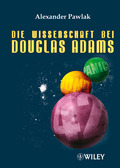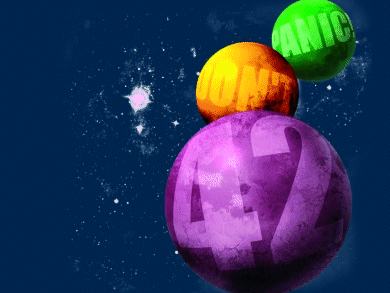The creator of The Hitchhiker’s Guide to the Galaxy was not just a comic science fiction writer but an avid follower of science – from quantum physics to evolution. Alexander Pawlak discusses the two sides of Douglas Adams.
“The old C. P. Snow thing about the two cultures — I accidentally fell down on the wrong side. You know, at the age of 15 or whenever you have to make the once and forever decision, if you going to be an artist or a scientist. And just because I had a disappointing result at chemistry I went off and did arts,” said Douglas Adams, years after he had established himself as a writer of humorous science fiction.
After school, the 19 year old university freshman finally seemed to have turned his back on science, although his dream job at eight was to be a nuclear physicist. Instead he started to study English at the University of Cambridge. His true aim was to join the Cambridge University Footlights Dramatic Club, the cradle of many famous comedians like Peter Cook, John Cleese, Graham Chapman and Eric Idle (of Monty Python), Stephen Fry, Hugh Laurie (now famous for his portrayal of Dr. House) and actress Emma Thompson.
Douglas Adams started his career in 1974 as a struggling writer for radio and TV comedy. He found his own voice in 1978, creating “The Hitchhiker’s Guide to the Galaxy”, which started as a BBC radio series and spawned a mind boggling number of incarnations like stage plays, books, records, TV series, computer games, comic books and – four years after Adams died in 2001 in Santa Barbara, California – a major movie.
The galactic adventures of Arthur Dent, escaping the destruction of earth by the help of his extraterrestrial friend Ford Prefect is no “hard SF” but a hilarious tour de force through life, the universe and everything, including of course science, in which Douglas Adams had an enduring interest.
“He already knew plenty of science. It rings through almost every line he wrote and through the best jokes he made. As a single example, think of the Infinite Improbability Drive. Douglas’s ear for science was finely tuned. He thought like a scientist, but was much funnier,” says zoologist Richard Dawkins, committed advocate of Darwin’s theory of evolution, who became a close friend of Douglas Adams in 1987 and sparked his interest in the scientific investigation of the miracles of life.
Discovering the science in the writings of Douglas Adams adds another dimension to the reading pleasure. And following his career after quitting as a novelist in 1992 will give a new perspective on his technological ideas for a galactic travel guide that seems to anticipate the World Wide Web and the e-book.
My book, “Die Wissenschaft bei Douglas Adams”, isn’t just a journey through the scientific allusions in the adventures of Arthur Dent. It also follows the adventures of Dirk Gently and Doctor Who, who also own a place in the creative universe of Douglas Adams. There is much to discover: the destruction of the earth, the chances for survival in space, the realm of improbability, travels through the Milky Way (our nearest neighbourhood in a vast universe), Newton’s revenge, the second most intelligent life form on Earth and even the end of the universe … but: Don’t panic!
Alexander Pawlak
Alexander Pawlak studied physics and philosophy in Marburg. After his diploma in theoretical physics he went into science journalism and started his career with an internship at “Spektrum der Wissenschaft”. In 2000 he interviewed Douglas Adams while working for the weekly newspaper “Die Zeit”. Since 2002 he has been the editor of “Physik Journal”, the membership journal of the German Physical Society, the oldest and biggest physical society in our galaxy.
Links

- Die Wissenschaft bei Douglas Adams
A. Pawlak,
Wiley–VCH, 2010
ISBN: 978-3-527-50456-5 - Alexander Pawlak’s Blog
Here you can find additional information and links about Douglas Adams.





Thank you for this. I heard the original “Hitchhiker’s Guide to the Universe” on the BBC when I was a student. I was captivated then, but now, listening again, I’m astonished by how much physics Adams knew and how prescient he was in some of his technological “jokes.” Consider his treatment of parallel dimensions, for example. It’s so much more sophisticated than most science fiction tropes. He clearly understood quantum mechanics and knew of the Everett “Many Worlds” solution. Or consider his idea of the “Babel Fish.” While pure fiction, it has inspired machine translation that is roughly analogous.
Adams’ achievements are all the more remarkable, because in those days there weren’t many physics books for the non-specialist, let alone Wikipedia and a million or more helpful websites.